Tech
Dominating the Market: Compact Track Loaders Undergo Rapid Advancements
Published
3 years agoon
By
admin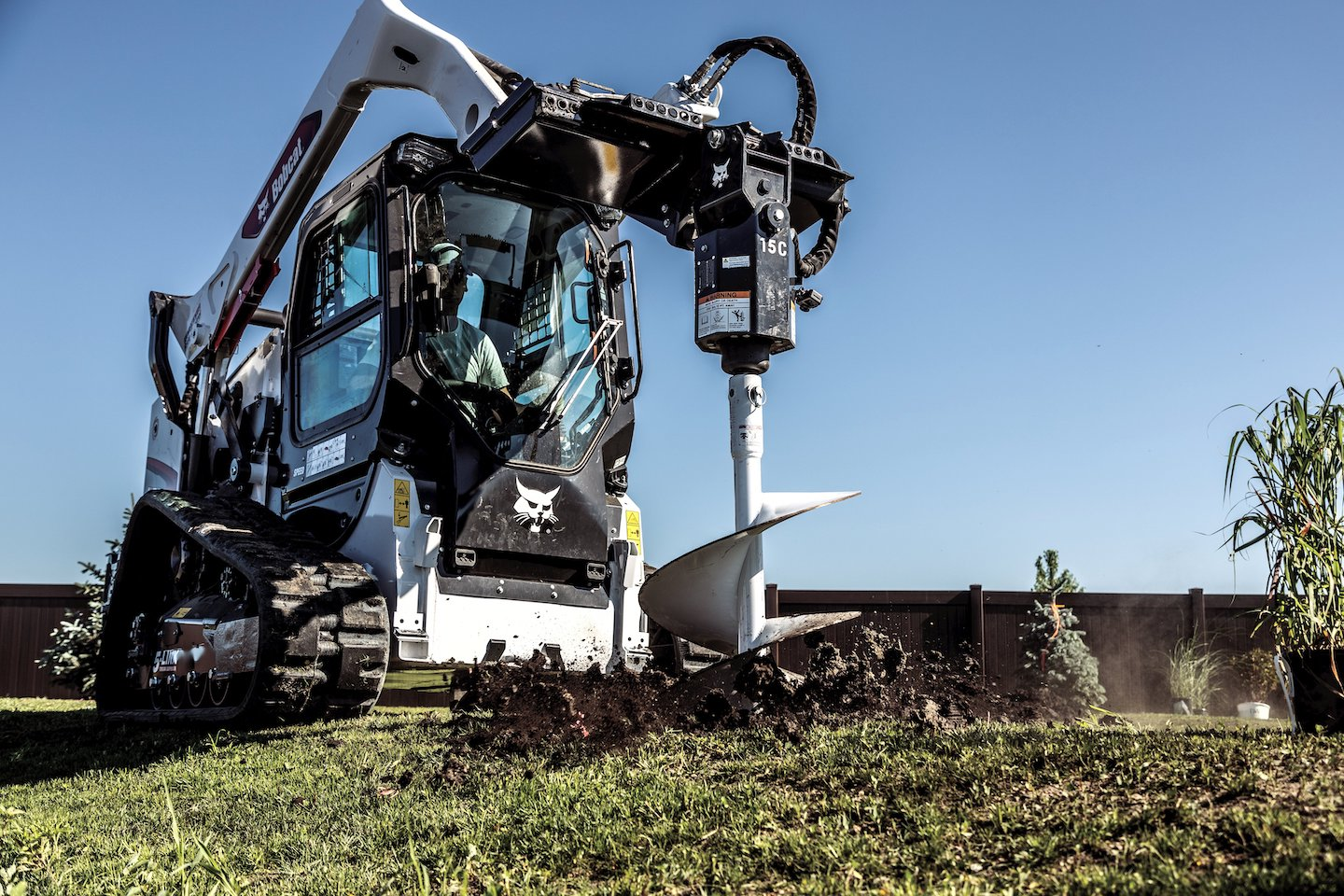
More than a third – 37 out of 87 – of the compact track loaders in the Equipment World Spec Guide are listed as new by their manufacturers.
This isn’t surprising. Compared with their nearest equipment kin – skid steers – CTLs are relative newcomers to the industry. So CTLs remain in a phase of development that includes rapid advances.
Two other factors propel CTL development. First is their broad, enthusiastic acceptance by customers. Maintaining market share requires OEMs to stay at the forefront of product development.
Second, the industry as a whole continues to make great gains in technology as advances in electronics, metallurgy and basic design bring peak performance to all types of equipment. This is as true for CTLs as for any other category.
The downside? In a world of relentless product development, it can be hard for customers to feel assured they’re getting the best from their equipment decisions. So, we’ve provided some tips from experts to help you learn more about the new compact track loaders and what you should look for when searching the market for your next CTL.
Take time to study new models
There are going to be a lot of newcomers on the market since you bought your last CTL, so take the time to study what they offer. Here are some examples.
Bobcat’s new R-Series consists of four models, the T62, T64, T66 and T76. The T62 is radial-lift and the others are vertical. All four feature Bobcat’s optional five-link torsion suspension, which improves ride quality and machine stability, especially at full lift. Engines are now mounted inline rather than transverse. This provides more space for emissions-control components but also boosts rated operating capacity 200 to 300 pounds by creating slightly longer machines. Their width is comparable to R-Series’ predecessors.
R-Series machines also have greater lift and reach than the models they replace. Engine placement and a larger fan contribute to overall improved cooling performance, especially when running attachments. LED lights are standard equipment. A prefilter has been placed ahead of the main fuel filter. “Everything about the new R-Series really is new,” says Tyler Zima, senior product specialist, Bobcat.
 The Bobcat T66 has an 8,927-pound operating weight and a 2,450-pound ROC. Travel speed is 7.2 mph, or 10.2 mph with optional two-speed drive. System pressure at the quick couplers is 3,500 psi. Standard auxiliary flow is 17.6 gallons per minute and 26.9 gpm with optional high flow. Length with the standard bucket is 134.9 inches. Height to bucket pin is 120 inches, and reach at maximum height is 36.7 inches.Cat’s newest CTLs, the D3 Series machines, have been out since August 2019. “They are a further refinement of what were already forward-looking machines,” says Kevin Coleman, senior product specialist, Cat. “For example, we’ve had sealed and pressurized cabs since 2013.”
The Bobcat T66 has an 8,927-pound operating weight and a 2,450-pound ROC. Travel speed is 7.2 mph, or 10.2 mph with optional two-speed drive. System pressure at the quick couplers is 3,500 psi. Standard auxiliary flow is 17.6 gallons per minute and 26.9 gpm with optional high flow. Length with the standard bucket is 134.9 inches. Height to bucket pin is 120 inches, and reach at maximum height is 36.7 inches.Cat’s newest CTLs, the D3 Series machines, have been out since August 2019. “They are a further refinement of what were already forward-looking machines,” says Kevin Coleman, senior product specialist, Cat. “For example, we’ve had sealed and pressurized cabs since 2013.”
Much of that refinement is directed at the working envelope. Visibility is enhanced everywhere, most notably to the bucket corners and the edges of the tracks. There’s about 3 inches of additional space between the joysticks; this provides more knee room and opens up more foot placement options. An available performance package offers dual self-levelling, work tool positioning and return-to-dig.
D3 models are also compatible with all three of Cat’s Smart attachments: grader blade with assist, dozer blade with assist and backhoe. Joystick controls can be converted to match the needs of these Smart attachments for more intuitive control.
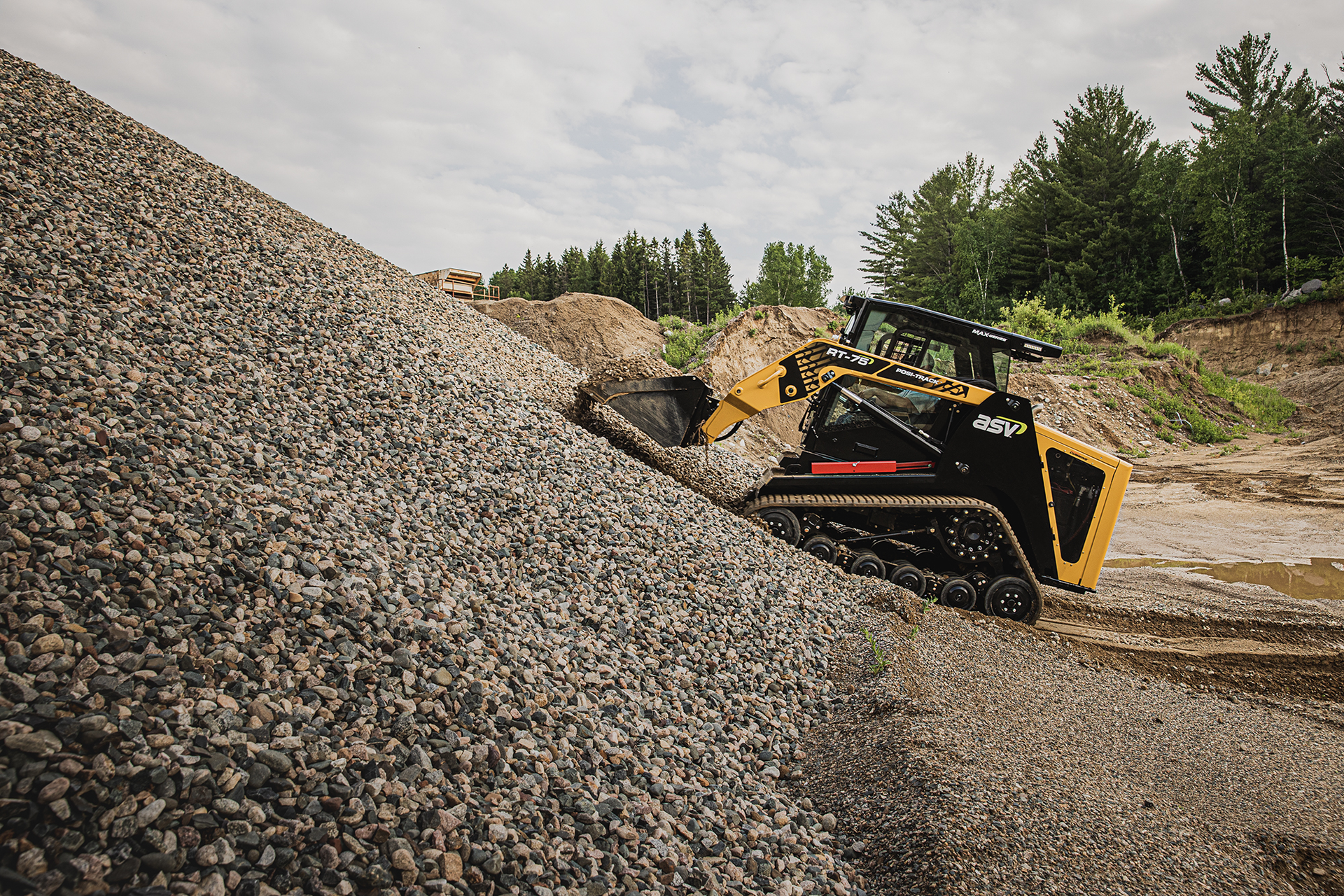 The ASV RT-75 is one of four models of Max-Series Posi-Trak loaders. Improvements are extensive, including those to the cabs. A single-sided lap bar enhances operator comfort and provides easier entry and exit. Space has been added at the shoulders, knees and footwell. The optional enclosed cab has 52% more glass space for better visibility and has a roof escape hatch. The 74-horsepower radial-lift RT-75 has an operating weight of 9,060 pounds and an ROC of 2,750 pounds.Lists of specs and features are crucial, says Buck Storlie, product manager, ASV. “But the best plan is to visit a dealer and do a demo. You can tell a lot from the cab that the specs don’t reveal.”
The ASV RT-75 is one of four models of Max-Series Posi-Trak loaders. Improvements are extensive, including those to the cabs. A single-sided lap bar enhances operator comfort and provides easier entry and exit. Space has been added at the shoulders, knees and footwell. The optional enclosed cab has 52% more glass space for better visibility and has a roof escape hatch. The 74-horsepower radial-lift RT-75 has an operating weight of 9,060 pounds and an ROC of 2,750 pounds.Lists of specs and features are crucial, says Buck Storlie, product manager, ASV. “But the best plan is to visit a dealer and do a demo. You can tell a lot from the cab that the specs don’t reveal.”
He says operator comfort and visibility are examples of features that must be experienced to be fully appreciated. Storlie says this is especially true for the Max-Series CTLs introduced in 2020, in which cab improvements were part of the extensive changes in design.
But there can be some downsides to some new features, says Ryan Anderson, product marketing manager, New Holland Construction. Advanced electronics, emissions control systems and other new features introduce new failure modes, he says. “Sometimes it seems the market’s thinking is, ‘What’s the next widget we can put on this machine?’”
A key consideration when evaluating new models is reliability, Anderson says. “Early machines were extremely durable. You still hear customers lament, ‘They just don’t make ’em like they used to.’ For this reason, New Holland pays strict attention to durability in the design of new features.”
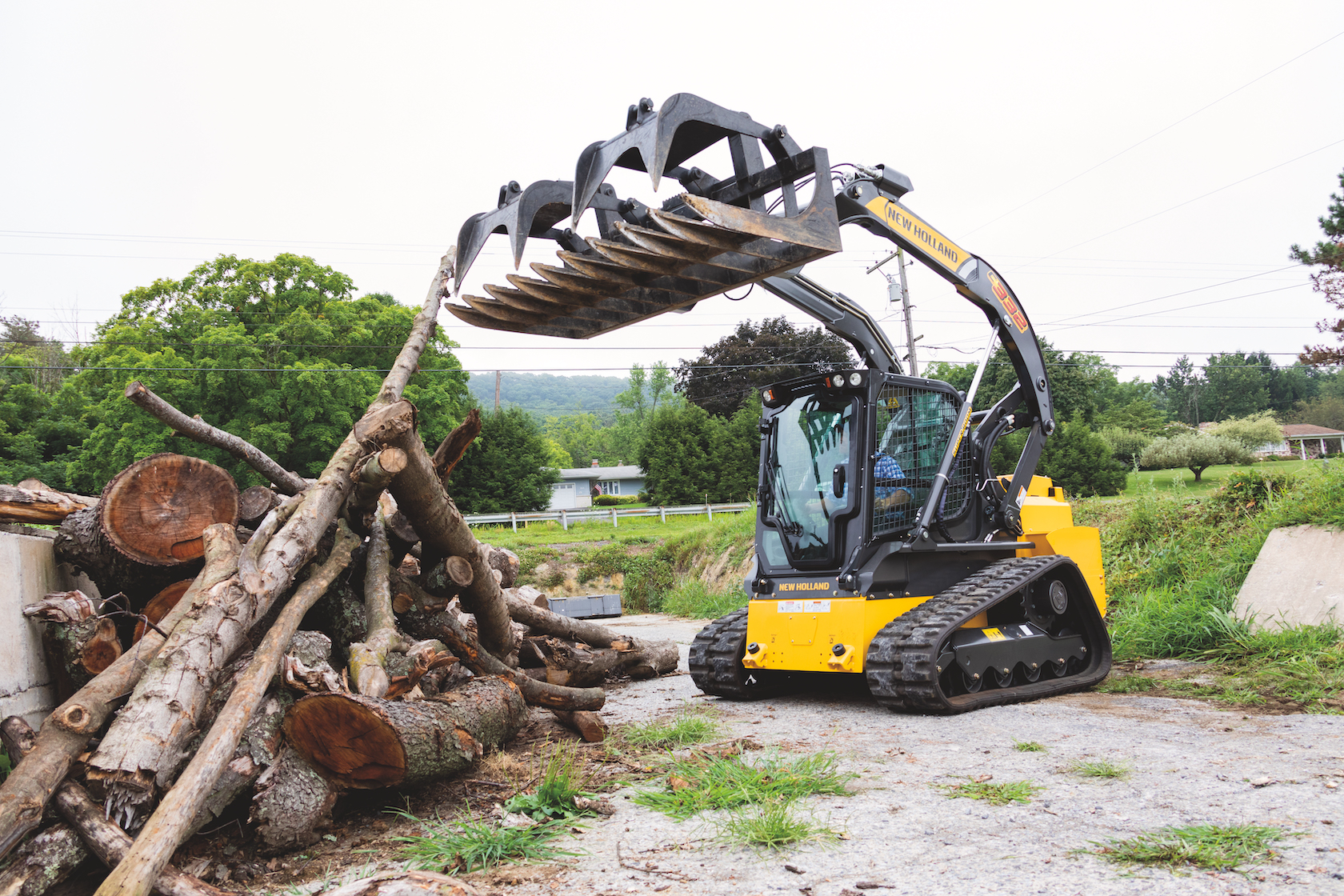 The 74-net-horsepower C332 from New Holland features the Super Boom vertical-lift package with a bucket hinge pin height of 131.1 inches and dump reach at full lift of 34.4 inches at 45 degrees. Standard flow is 24.2 gallons per minute with a 37.6 gpm high-flow option. Relief pressure is 3,046 psi. Operating weight is 9,630 pounds, and ROC is 2,240 pounds. Bucket breakout force is 7,360 pounds.Anderson says this may be an ideal time to buy a feature-packed new model before the current boom market pulls back, which will inevitably occur. “Markets become more cost-centric in downturns, and it’s hard then for OEMs to develop and sell new features.”
The 74-net-horsepower C332 from New Holland features the Super Boom vertical-lift package with a bucket hinge pin height of 131.1 inches and dump reach at full lift of 34.4 inches at 45 degrees. Standard flow is 24.2 gallons per minute with a 37.6 gpm high-flow option. Relief pressure is 3,046 psi. Operating weight is 9,630 pounds, and ROC is 2,240 pounds. Bucket breakout force is 7,360 pounds.Anderson says this may be an ideal time to buy a feature-packed new model before the current boom market pulls back, which will inevitably occur. “Markets become more cost-centric in downturns, and it’s hard then for OEMs to develop and sell new features.”
Spec’ing a new model
New models have so much potential that spec’ing a new machine is far more complex than in the past. This is especially true if the CTL is going to be more than a bucket-and-forks machine for the customer.
“John Deere has over 100 attachments for compact equipment, including compact track loaders, available from the factory,” says Luke Gribble, solutions marketing manager, Deere. “Ask yourself, ‘What kind of jobs am I going after?’ Look beyond the one main attachment you use.” And even if it’s always going to be a bucket, consider material density – rock, dirt, mulch, etc. – to make sure the machine will handle the load.
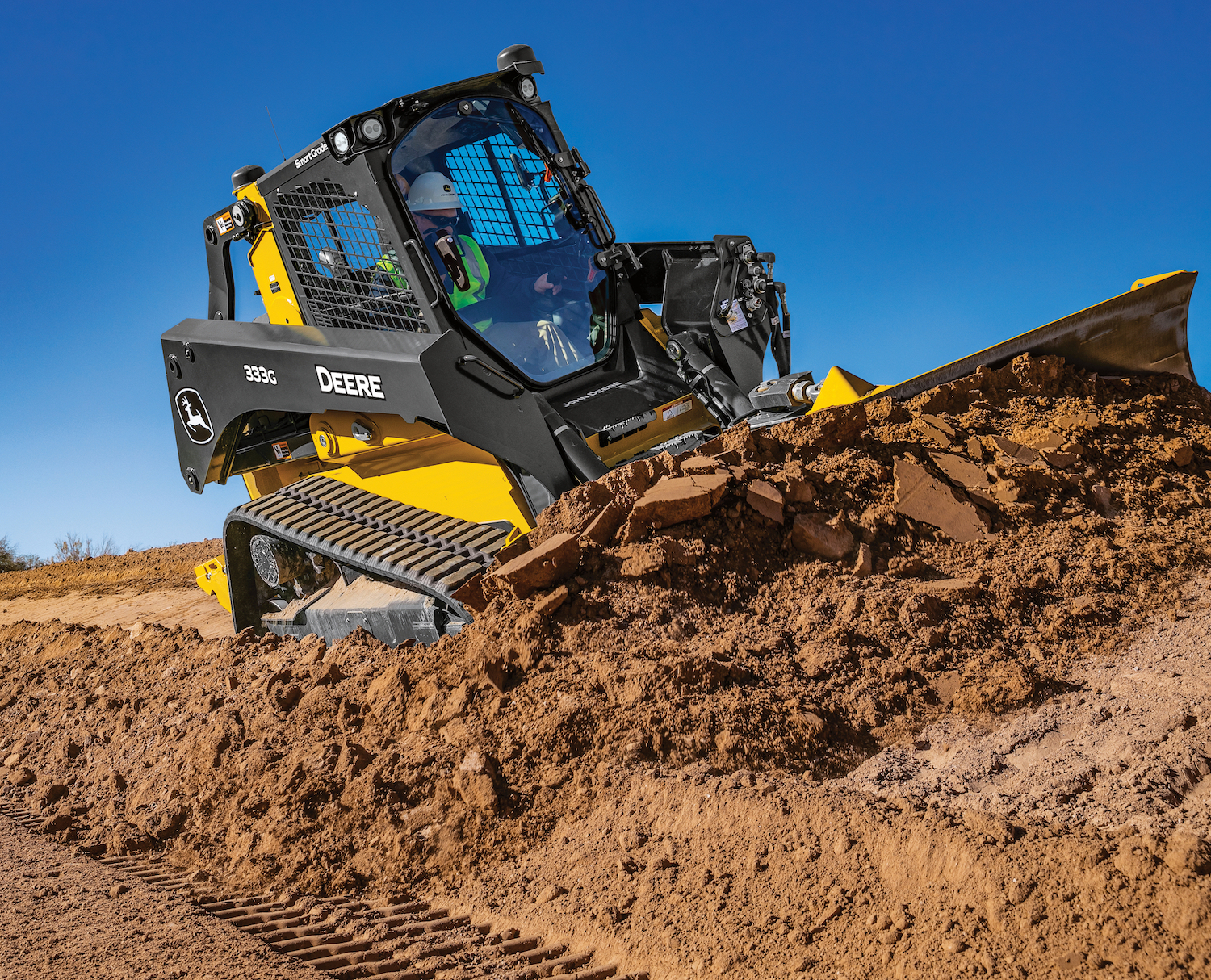 With its 3,700-pound ROC and 12,100-pound operating weight, the 333G is the largest of Deere’s four CTL models. The intercooled, turbocharged Yanmar engine provides 100 gross horsepower and 291.3 foot-pounds of torque. The vertical-lift machine has a hinge pin height of 132 inches. An onboard grade indication option can be installed from the factory or in the field and provides real-time roll and pitch values in either degrees or percentages.ROC, flow and pressure are still key specs, but other factors must be considered. “Some attachments use 14-pin connectors,” says Devin Adams, product manager, CTLs and skid steers, Wacker Neuson. “Others, notably proprietary smart attachments, use seven-pin connectors. Attachment interface is mechanical and hydraulic but also electrical and it’s not always plug-and-play.”
With its 3,700-pound ROC and 12,100-pound operating weight, the 333G is the largest of Deere’s four CTL models. The intercooled, turbocharged Yanmar engine provides 100 gross horsepower and 291.3 foot-pounds of torque. The vertical-lift machine has a hinge pin height of 132 inches. An onboard grade indication option can be installed from the factory or in the field and provides real-time roll and pitch values in either degrees or percentages.ROC, flow and pressure are still key specs, but other factors must be considered. “Some attachments use 14-pin connectors,” says Devin Adams, product manager, CTLs and skid steers, Wacker Neuson. “Others, notably proprietary smart attachments, use seven-pin connectors. Attachment interface is mechanical and hydraulic but also electrical and it’s not always plug-and-play.”
Matching connectors is not enough; controls must also be matched. “Look at the grips. Are there multiple circuits? A plus B functions? Are there enough buttons and are they configured properly?” Adams says. Wacker Neuson CTLs offer a D Mode whereby grip button functions are reassigned for added convenience and efficiency.
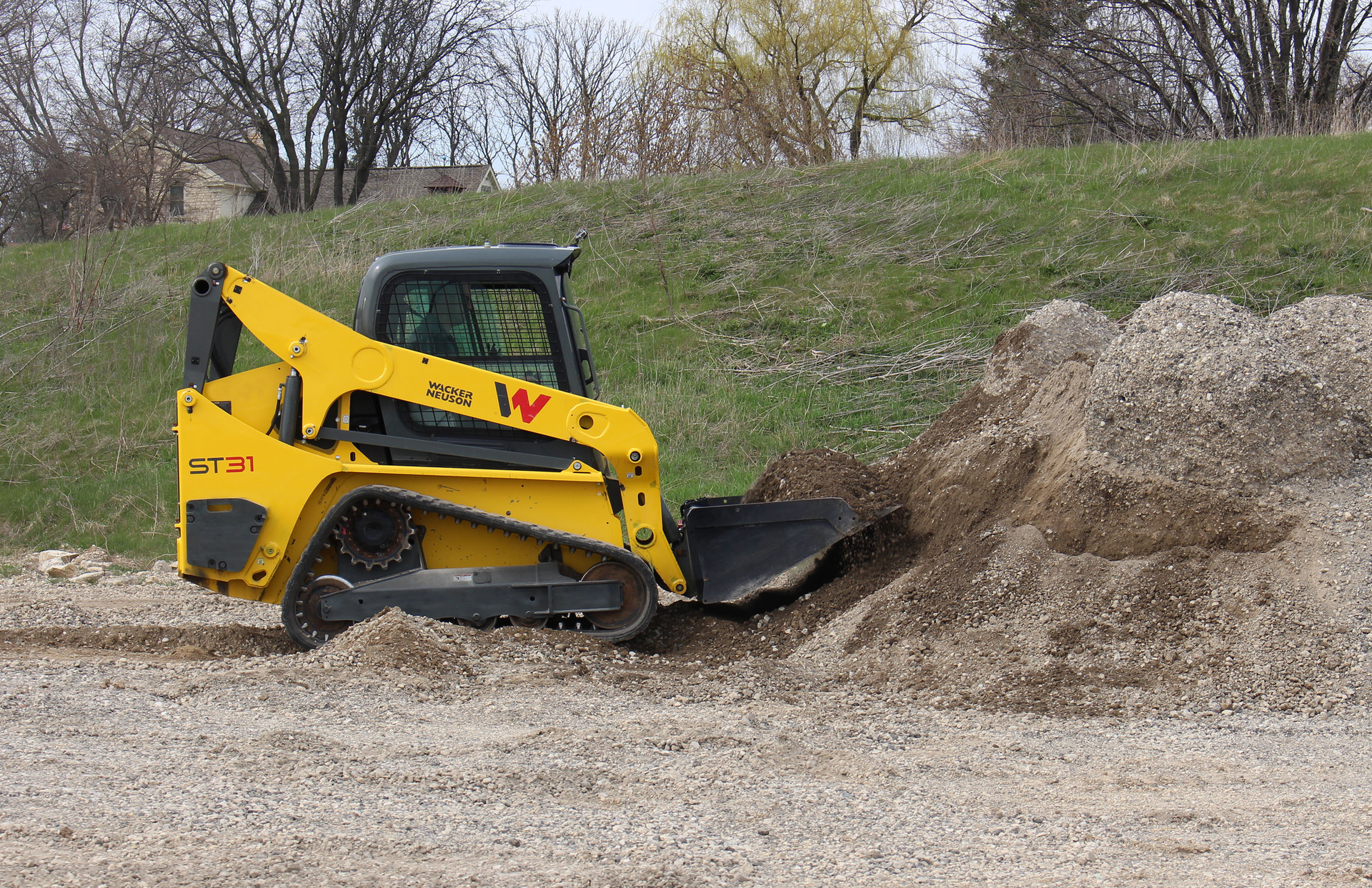 The 8,095-pound ST31 is the second-smallest CTL in the Wacker Neuson six-model line. This size remains popular with landscapers, owner-operators and others looking for CTL performance in a smaller package. Overall length with the standard bucket is 136.6 inches. Hinge pin height is 125.5 inches, and overall width is 67.1 inches. The Kohler KDI 2504 TCR engine is rated at 74 horsepower. Standard auxiliary hydraulic flow is 20 gallons per minute with a 30 gpm high-flow option available.Chris Trampush, product manager for CTLs and skid steers at JCB, recommends looking at the details of the application. “The same attachment can put very different demands on the loader depending on conditions,” he says. “Just knowing you’ll be using a bucket or forks isn’t enough. You need to understand exactly how you’ll be using that bucket or those forks.”
The 8,095-pound ST31 is the second-smallest CTL in the Wacker Neuson six-model line. This size remains popular with landscapers, owner-operators and others looking for CTL performance in a smaller package. Overall length with the standard bucket is 136.6 inches. Hinge pin height is 125.5 inches, and overall width is 67.1 inches. The Kohler KDI 2504 TCR engine is rated at 74 horsepower. Standard auxiliary hydraulic flow is 20 gallons per minute with a 30 gpm high-flow option available.Chris Trampush, product manager for CTLs and skid steers at JCB, recommends looking at the details of the application. “The same attachment can put very different demands on the loader depending on conditions,” he says. “Just knowing you’ll be using a bucket or forks isn’t enough. You need to understand exactly how you’ll be using that bucket or those forks.”
He also advises against making assumptions about the need for system upgrades. “No matter what your needs have been in the past, you may find that the newer, more capable machines meet those needs in standard configuration. High flow still has its place, but requiring it in the past does not necessarily indicate a need for it in the future for doing the same work.”
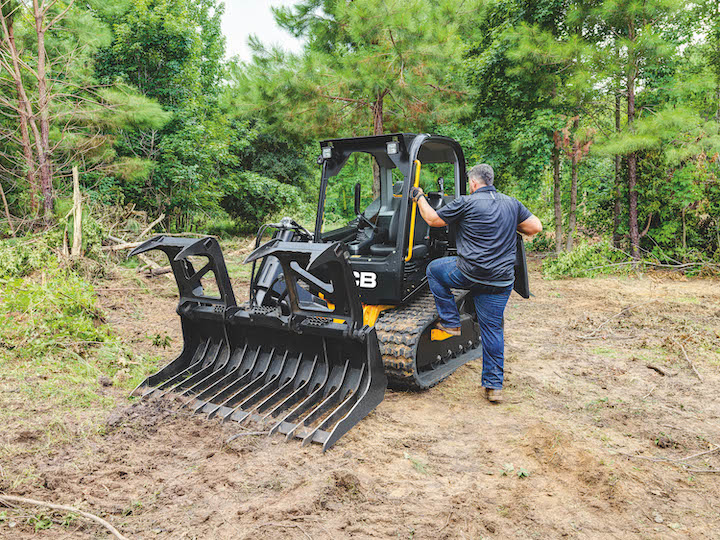 JCB offers multiple configurations of its 270T vertical-lift machine. The most popular configuration includes 17.7-inch rubber tracks, cab with heat and air conditioning, high-flow hydraulics with creep speed, two-speed drive and JCB Smoothride System. Operating weight is 11,003 pounds, and ROC is 2,723 pounds. As with all JCB CTLs, the 270T features an industry standard quick hitch for simple coupling to attachments from JCB as well as other manufacturers.George MacIntyre, product manager, Case Construction Equipment, offers another approach. “Take a look at the auxiliary hydraulic performance you need now and then consider buying a machine with the next level of auxiliary hydraulic performance.” He says this will future-proof your fleet and increase the scope of work you can do.
JCB offers multiple configurations of its 270T vertical-lift machine. The most popular configuration includes 17.7-inch rubber tracks, cab with heat and air conditioning, high-flow hydraulics with creep speed, two-speed drive and JCB Smoothride System. Operating weight is 11,003 pounds, and ROC is 2,723 pounds. As with all JCB CTLs, the 270T features an industry standard quick hitch for simple coupling to attachments from JCB as well as other manufacturers.George MacIntyre, product manager, Case Construction Equipment, offers another approach. “Take a look at the auxiliary hydraulic performance you need now and then consider buying a machine with the next level of auxiliary hydraulic performance.” He says this will future-proof your fleet and increase the scope of work you can do.
“When you buy a CTL, you expect that asset to live in your fleet for many years,” MacIntyre adds. “If you expect to grow your business and expand your services, you don’t want to be limited by auxiliary hydraulic performance.”
Blane Burroughs, product specialist, Kubota, notes that sophisticated attachments need sophisticated protection. “We offer a guard protection package for several models of our track loaders. The kit includes coupler guards, lights guards, a DEF guard and additional protection for the FOPS and engine compartment.”
New machine, new markets?
The current lineup of compact track loaders will allow customers to do the same work they’ve always done with greater efficiency and productivity, but should the advantages stop there? If these machines are so capable, do they provide an opportunity for owners to offer more services to the same client base or even enter entirely new markets?
“The attachments available for CTLs and the availability of high-flow hydraulics can significantly expand your capabilities and help grow your business,” MacIntyre says. He mentions landscapers and concrete companies that already use CTLs for their main applications. “With a mulching attachment, they can do clearing and site prep for residential work.”
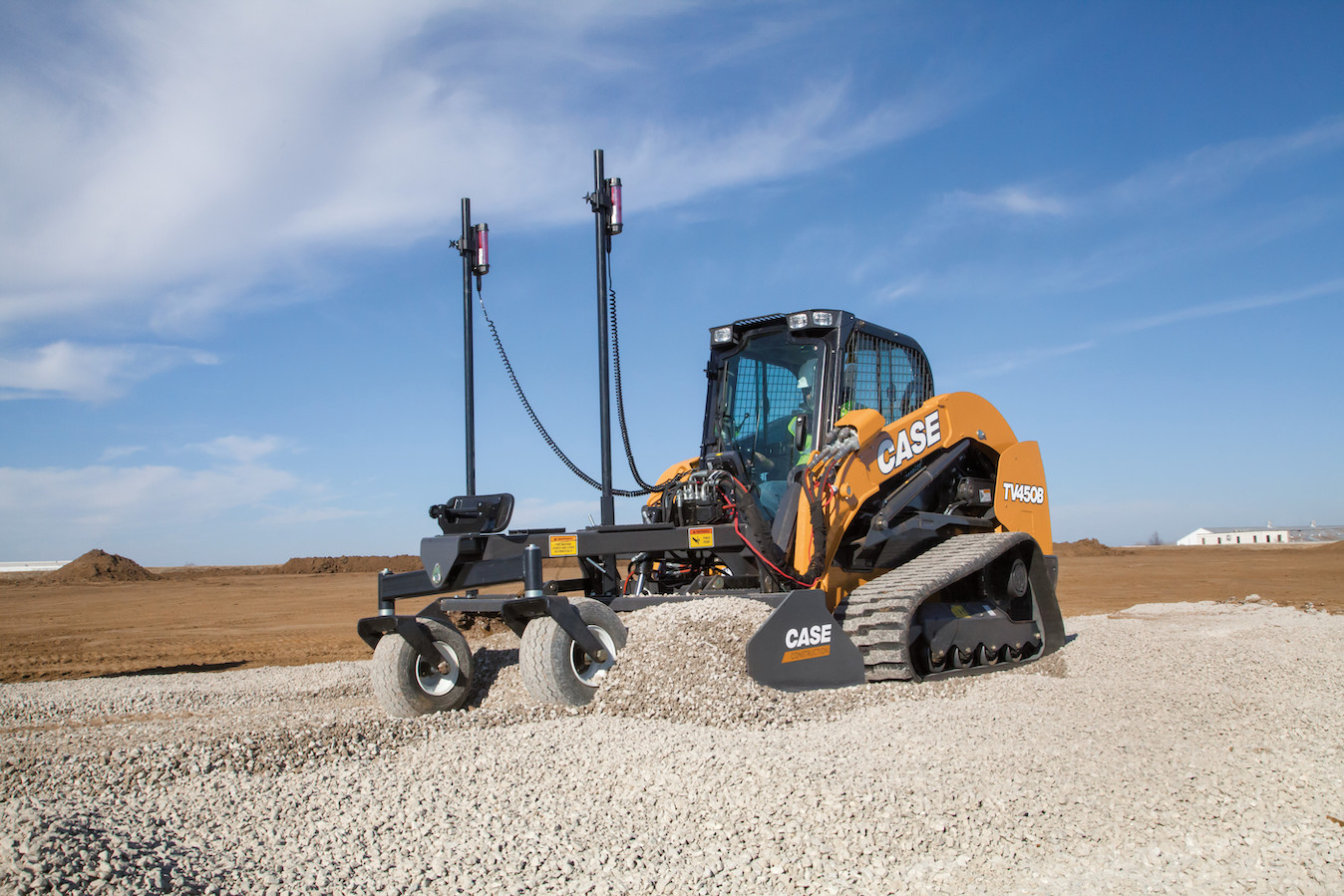 The vertical-lift TV450B is the largest of the five-model lineup of Case B Series CTLs and has features shared by all B Series models. Electrohydraulic control response can be set to low, moderate or aggressive. Creep speed allows slow travel while providing full hydraulic power to attachments. Operator profiles can be set to match individual preferences or best settings by job types. New fault codes with descriptive text facilitate troubleshooting.Snow removal is another market opportunity in many parts of the country, one that helps even out annual revenue flow. Snow removal seems simple enough, but actually there are multiple attachment options including snow pushers, blades, brooms and blowers.
The vertical-lift TV450B is the largest of the five-model lineup of Case B Series CTLs and has features shared by all B Series models. Electrohydraulic control response can be set to low, moderate or aggressive. Creep speed allows slow travel while providing full hydraulic power to attachments. Operator profiles can be set to match individual preferences or best settings by job types. New fault codes with descriptive text facilitate troubleshooting.Snow removal is another market opportunity in many parts of the country, one that helps even out annual revenue flow. Snow removal seems simple enough, but actually there are multiple attachment options including snow pushers, blades, brooms and blowers.
Lee Padgett, product manager, Takeuchi, lists other opportunities. “There are tree spade attachments for nursery work, power rakes for soil conditioning, mulchers and mowers for managing large tracts of vegetation, and trenchers for installing utilities and irrigation.”
Zima says the market is split on this matter. “Smaller CTLs will continue to do much of the same work they always have. Larger-horsepower machines have the greatest opportunity to move into other markets.”
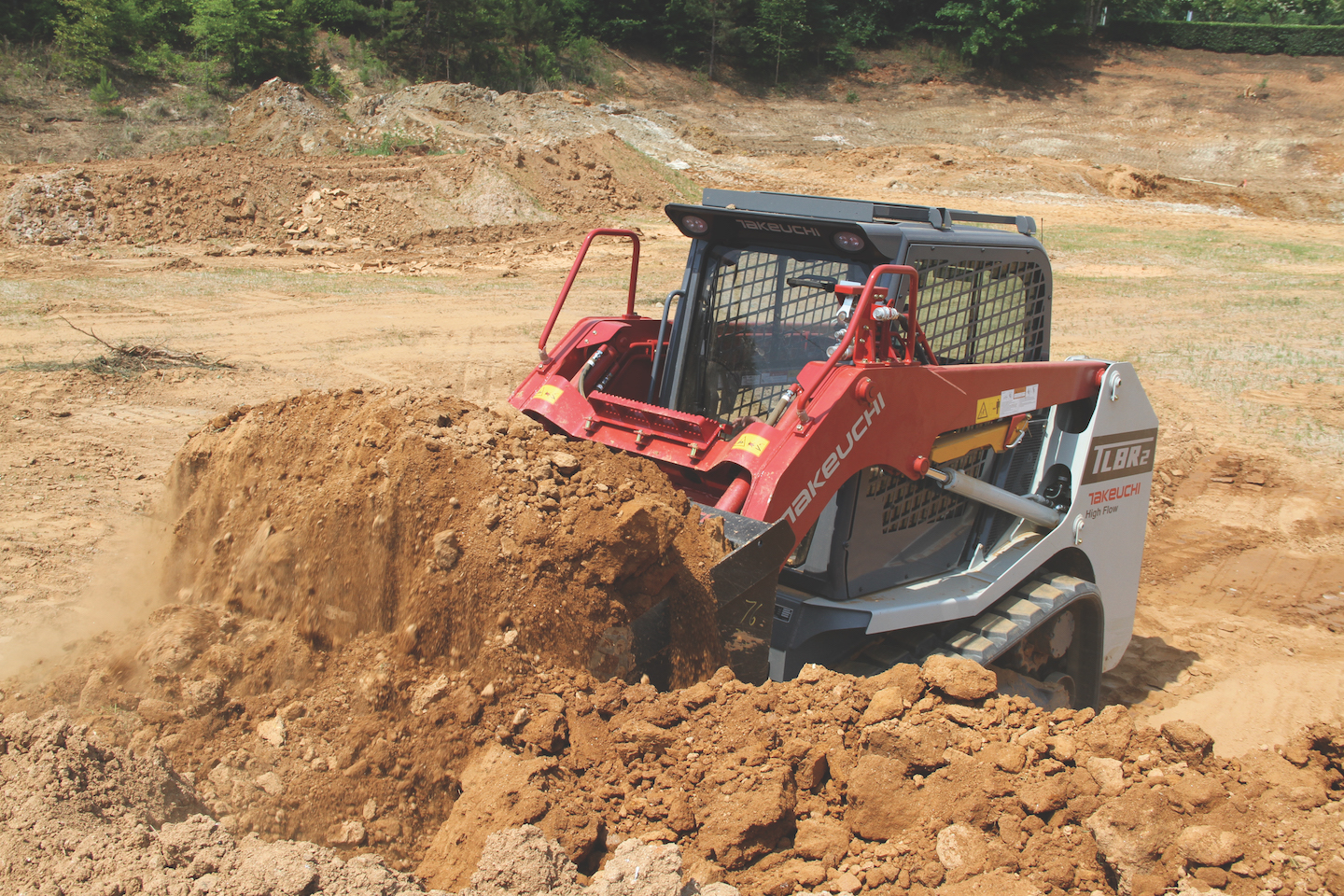 Features of the radial-lift Takeuchi TL8R2 include repositioned travel motors with internally routed drive lines, double and triple flange track rollers and LED lighting. Options include creep mode, load-sensing auto shift and high-flow auxiliary hydraulics. Operating weight with cab is 9,182 pounds, and ROC is 2,116 pounds.He cites road construction as an example. A dozer or grader can do the heavy cutting, and a large CTL can come in behind to button up smaller areas using the same GPS system and a variety of attachments. The use of a CTL allows single lane closures, instead of having to close multiple lanes.
Features of the radial-lift Takeuchi TL8R2 include repositioned travel motors with internally routed drive lines, double and triple flange track rollers and LED lighting. Options include creep mode, load-sensing auto shift and high-flow auxiliary hydraulics. Operating weight with cab is 9,182 pounds, and ROC is 2,116 pounds.He cites road construction as an example. A dozer or grader can do the heavy cutting, and a large CTL can come in behind to button up smaller areas using the same GPS system and a variety of attachments. The use of a CTL allows single lane closures, instead of having to close multiple lanes.
Narrowing the gap
There have always been gaps between compact track loaders and skid steer loaders. Most notable is upfront cost, but ongoing O&O costs, travel speed and ROC create additional differences. What efforts have OEMs made to close these gaps and increase the appeal of CTLs to customers considering either a CTL or skid steer?
“We strive to have common parts between our skid and track loaders,” says Mike Goche, global product manager, skids/tracks, Gehl. “This lowers maintenance-parts costs to the end customer and allows for less inventory at the dealer service centers.”
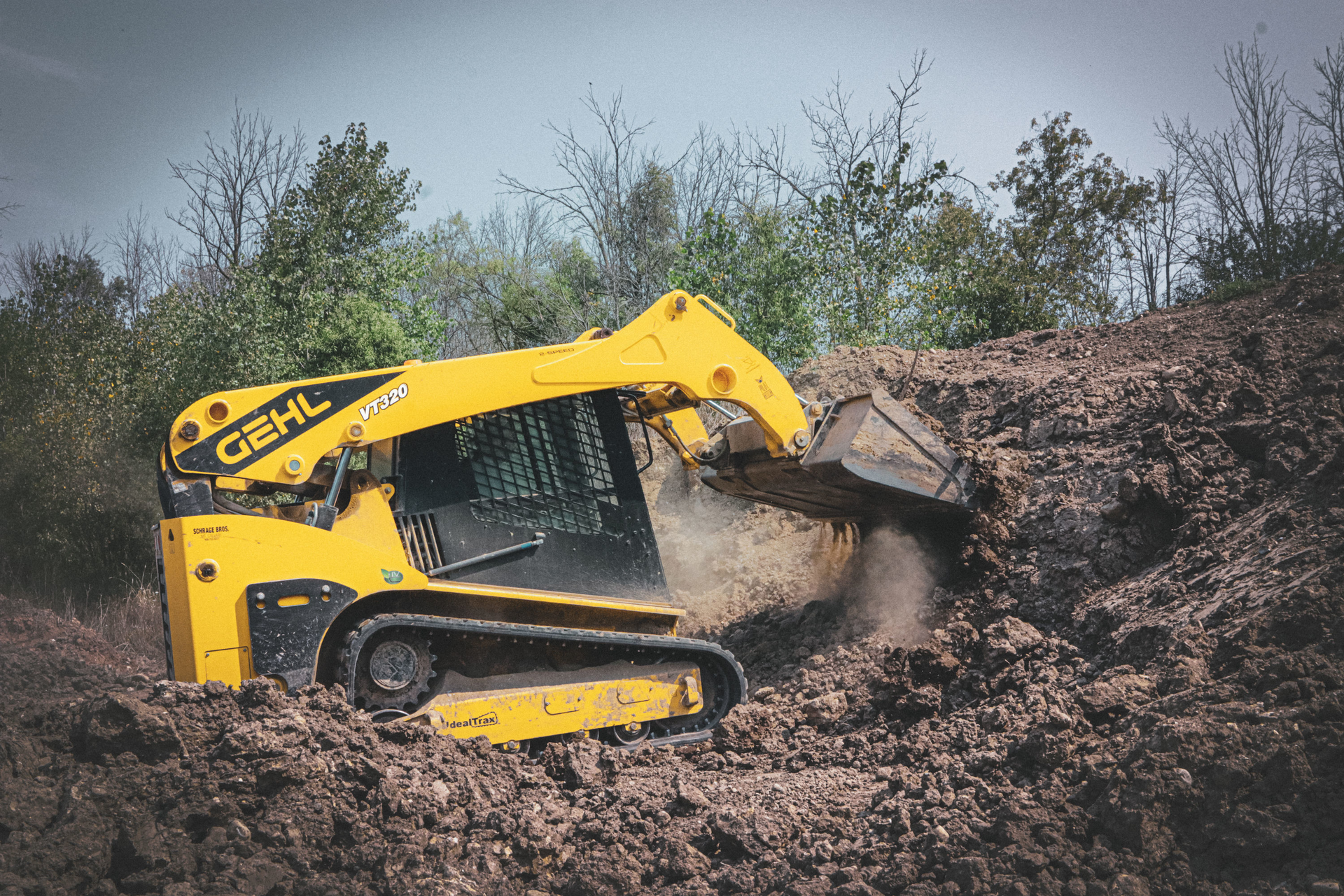 The VT320 is distinct in the Gehl lineup of CTLs. It is the company’s largest with a 3,200-pound ROC and the most powerful with 114 net horsepower. Two-speed drive is standard and provides a top travel speed of 7.8 mph. Optional speed control tailors machine operating speeds to applications, independent of engine speed. Optional Hydra-Glide allows the lift arms to float when transporting loads, to reduce spillage, improve comfort and allow higher travel speeds.Gehl CTLs also feature IdealTrax. This design makes it easier to switch or repair tracks, which reduces downtime. It also automatically releases track tension when the machine is not in use, extending track life by up to 15 percent.
The VT320 is distinct in the Gehl lineup of CTLs. It is the company’s largest with a 3,200-pound ROC and the most powerful with 114 net horsepower. Two-speed drive is standard and provides a top travel speed of 7.8 mph. Optional speed control tailors machine operating speeds to applications, independent of engine speed. Optional Hydra-Glide allows the lift arms to float when transporting loads, to reduce spillage, improve comfort and allow higher travel speeds.Gehl CTLs also feature IdealTrax. This design makes it easier to switch or repair tracks, which reduces downtime. It also automatically releases track tension when the machine is not in use, extending track life by up to 15 percent.
Burroughs says that such things as travel speed, width and weight are driven by Kubota’s customer base. “As an example, the operating weights of our SVL65-2 and SVL75-2 are under 10,000 pounds, allowing the customer to tow their machine without needing a CDL.”
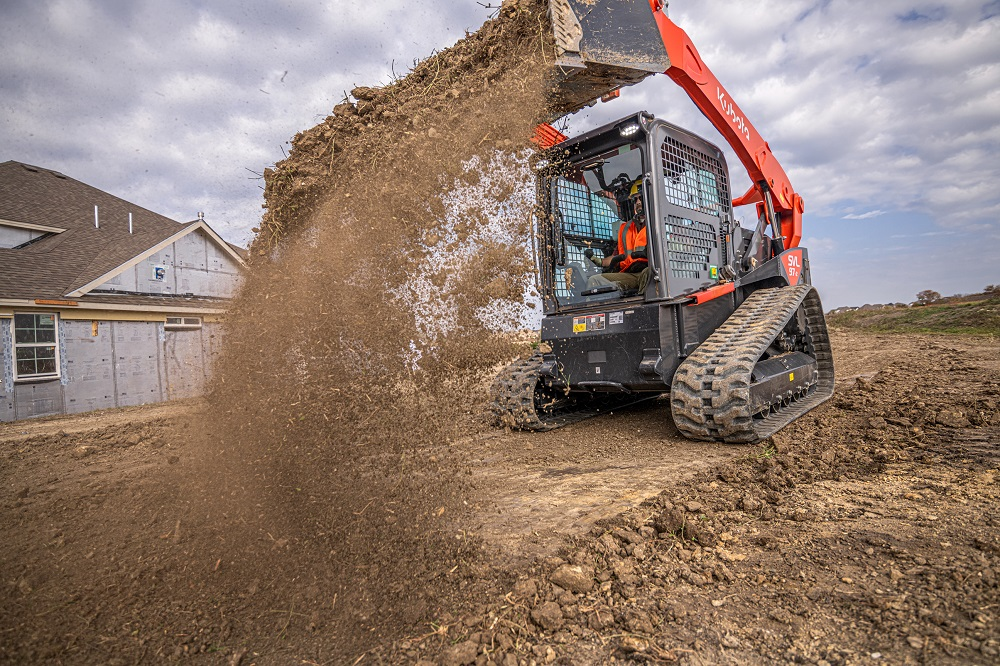 Newest among Kubota’s CTLs is the SVL97-2. Features include a 96-horsepower engine, an ROC of 3,200 pounds, breakout force of 7,961 pounds and a 3.4-foot reach at maximum height. Telematics and a rearview camera are standard. Front LED work lights are optional. Other improvements include a re-engineered DEF system for long-term reliability and better cab sealing to keep out water, dust and debris.Others say there is a clear distinction between compact track loaders and skid steers and the markets they serve.
Newest among Kubota’s CTLs is the SVL97-2. Features include a 96-horsepower engine, an ROC of 3,200 pounds, breakout force of 7,961 pounds and a 3.4-foot reach at maximum height. Telematics and a rearview camera are standard. Front LED work lights are optional. Other improvements include a re-engineered DEF system for long-term reliability and better cab sealing to keep out water, dust and debris.Others say there is a clear distinction between compact track loaders and skid steers and the markets they serve.
“Honestly, I don’t feel like the market is trying to narrow the gap between skid steers and compact track loaders,” says Padgett. “In the U.S., CTLs have a greater market share due to their versatility and their tracked undercarriage, which makes them more suitable for multi-terrain use. But skid steers have their place, such as for roadwork with frequent spin turns on paved surfaces, which would cause premature wear on tracks.”
You may like
-


Hyundai to Reenter Compact Market at Conexpo 2023
-


Doosan Changes Its Brand Name to Develon
-
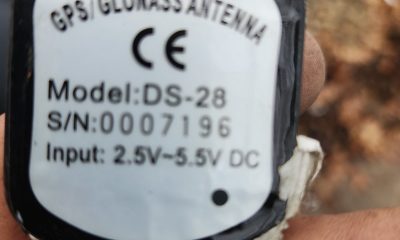

Contractor tracks down stolen skid steer, finds theft ring
-


Top 40 construction equipment stories of 2022
-


Kubota unveils UTVs for 2023 with new colors, accessories
-
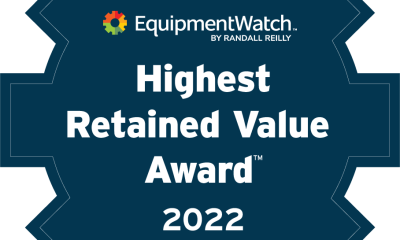

Finalists named for EquipmentWatch Highest Retained Value Awards
Tech
Cat’s Next Generation 255 and 265 Get More Power, Lift Height
Published
6 months agoon
October 10, 2023By
admin
Caterpillar is bidding farewell to its 259D3, 279D3 and 289D3 compact track loaders with the introduction of its new, next-generation 255 and 266 models.
The completely redesigned models debuted at media and customer events at Caterpillar’s Edwards, Illinois, Demonstration and Learning Center last week. The 255 and 265 offer improved engine performance, more lift height, a roomier cab and more standard technology than their predecessors.
“We kept the DNA of the D3 series while reimagining the possibilities of loader performance using voice of customer feedback to lead the way,” says Trevor Chase, product application specialist for Caterpillar. “Both next-generation models leverage the many benefits offered by the vertical lift design. The new Cat 255 replaces the 259D3, while the 265 replaces both the 279D3 and 289D3 machines.”
The CTLs are the last of Cat’s building and construction products to get the next-generation treatment and simplified nomenclature. The first number (2) represents the skid steer loader and compact track loader machine family; the middle number (5 or 6) designates the machine size; and the ending number (5) is the compact track loader identifier. Skid steers will be identified by a 0 end number. Additional new models will roll out in the coming months, the company says.
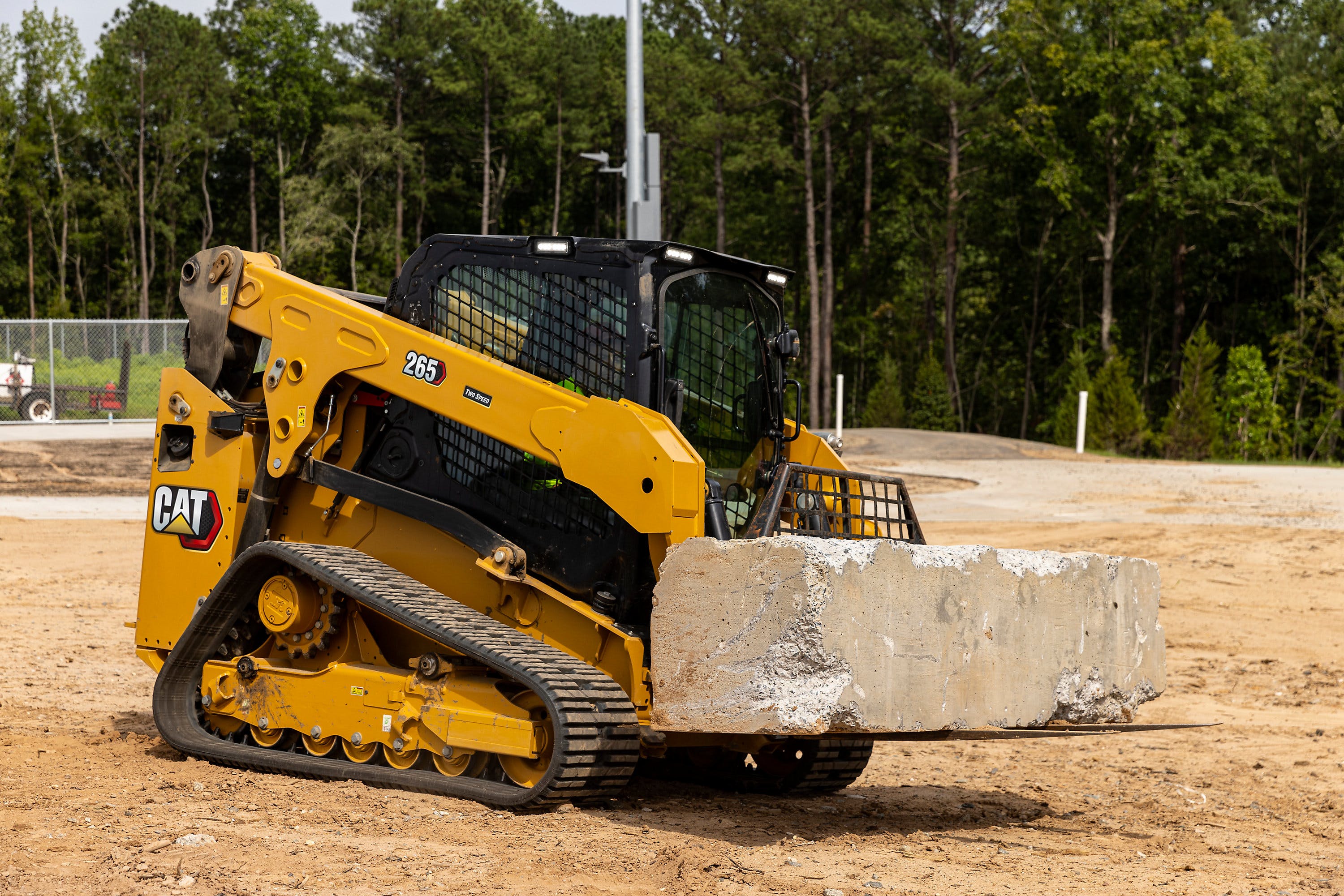 CaterpillarMore power and torque
CaterpillarMore power and torque
Cat equipped the 255 with a C2.8T engine and the 265 with a C2.8TA engine, both at 74 horsepower. This gives the new machines a significant boost in torque – 13% for the 255 and 43% for the 256 – over their D3-Series predecessors. The engine and cooling package are mounted lower in the frame for added visibility out the rear window and stability while lifting heavy loads.
Customers attest that the added lift height makes truck loading easier. The 255 offers 10 feet 4 inches of lift height, while the 265 can reach 11 feet high.
“The lift height has made a big difference when loading trucks,” said Derrick Roger, owner of Coast to Coast Lawnscapes, who spent several months testing the 255. “You can get on top of that truck now and empty the bucket; whereas, before you would have to shake the bucket to try to get the material to fall out.”
The 255 delivers 36% more tilt breakout, 26% higher lift breakout force and a 24% increase in rated operating capacity (ROC). The 265 also delivers 19% higher tilt breakout force and 22% higher lift breakout force.
Standard hydraulic pressure has been increased to 3,500 psi, allowing the 255 and 265 to operate all Cat Smart Attachments with the standard auxiliary hydraulics provided.
If demanding attachments require additional hydraulic flow, customers can have their Cat dealer activate the high flow functionality on the machine or remotely via software update. This makes it possible for the CTLs to hit 30 gallons per minute of flow at the standard system pressure.
A High Flow XPS factory option increases auxiliary hydraulic system pressure to 4,061 psi for both models, while also increasing the hydraulic flow to 30 gallons per minute for the 255 and 34 gallons per minute for the 265.
The torsion suspension undercarriage delivers better operator comfort, track wear and material retention, plus the stiffer design results in smoother graded surfaces, Cat says. A new 12.6-inch bar-tread narrow track option is available on the 255.
A more spacious cab
Cat says it has increased the cab width by 2.75 inches without making the machines wider and the footwell-to-ceiling height by 1.8 inches. The larger cab gives operators an additional 1.5 inches of hip room and 1.1 inches more width between the joysticks.
A range of new mechanical and air-ride suspension seat options are available, including a ventilated and heated seat. A new automatic temperature control allows operators to set a specific temperature. Relocated vents help cool or heat the machine quickly.
The standard package includes the same 5-inch LCD monitor as the D3 Series CTLs, which offers Bluetooth connectivity and functionality for the rearview camera feed, creep, job clock, and maintenance reminders.
Customers can upgrade to a new 8-inch advanced touchscreen monitor, like the display found in Cat’s next-generation mini excavators and small loaders. It delivers advanced radio control and supports the 270-degree multicamera option. The advanced monitor pairs with the advanced joysticks for integrated control of all machine functions and adjustments.
“You can adjust the movement – or the aggressiveness or the conservativeness – of how your tracks and lift arms work through your advanced touchscreen display,” Dante Thomas, skid steer and CTL marketing manager, said. “And you can control of all of your display functions from the advanced joysticks. There are buttons with enter and select functions on those joysticks that you’re able to change any functionality that is possible.”
Cat also redesigned the entry, making the 255 and 265 easier to enter and exit. The cab door can be opened even when the lift arms are not fully lowered to the frame stops. It can be removed without tools in less than one minute.
Advanced technologies
Calling the 255 and 265 “one of the most attachment-friendly machines on the market,” Thomas says both the standard and advanced monitors can run Cat Smart Attachments, such as the dozer and grader blades and backhoe.
“It has attachment recognition that when you plug the attachment into the machine, it recognizes which attachment is connected. It adjusts your joystick pattern, so it gives you intuitive and simple control,” says Thomas.
The available Cat Product Link Elite system tracks machine hours, location, asset utilization, provides fault code details and delivers advanced monitoring and machine health, that is remotely accessible via VisionLink. In addition, Product Link Elite provides remote flash and troubleshooting capabilities and quickly enables the remote activation of the SEA High Flow feature.
[embedded content]
Tech
Quick Data: 2023 Top-Selling Wheel Loaders and Auction Trends
Published
6 months agoon
October 9, 2023By
admin
Quick Data is a snapshot of new and used wheel loader sales trends from Randall Reilly’s EDA equipment financing data, TopBid auction price service and EquipmentWatch market trend reports.
Demand for wheel loaders has softened with new and used financed wheel loader sales down year-over-year from August 1, 2022 to July 31, 2023 according to Randall Reilly’s EDA equipment financing data.
Financed new wheel loader sales dropped 10%, while used financed wheel loader sales fell by 15% compared to the same period last year.
Cat (22.4%), Deere (21.0%) and Komatsu (12.4%) held their positions year-over-year as the top three sellers of new financed wheel loaders. Top models sold included the Deere 544 P-Tier (401), Deere 624 P-Tier (380) and the Komatsu WA270-8 (364).
[Watch: “A Really Solid Machine” – Test Run of Komatsu’s WA475-10 Wheel Loader]
Cat (28.5%) and Deere (22.9%) also snagged the No. 1 and 2 positions for the highest number of financed used units sold, with Case (14.7%) claiming the third spot. On the date we examined the data, the top-selling models were the Case 321F (340), Cat 926M (164) and the Case 621G (159).
During this period, there were more buyers of new loaders in Florida (955) than in any other state. Buyers of new wheel loaders were also prevalent in Texas (893) and Illinois (665). Those states were also top buyers of used financed machines, with 712 units sold in Texas, 413 in Florida, and 412 in Illinois.
EDA data is compiled from state UCC-1 filings on financed construction equipment. EDA continually updates this data as information comes in from each state.
[Related Content: A Rundown of the Latest Wheel Loaders for 2023]
Used Wheel Loader Market
Used wheel loader prices rose 10.1% for the 12-month period from August 1, 2022 to July 31, 2023, according to Randall Reilly’s EquipmentWatch market trend data.
The average price for a used wheel loader was $137,465 in July 2022 compared to $151,367 in July 2023. The average age of used wheel loaders fell slightly during the period, dropping from 8.8 years to 8.3 years.
 EquipmentWatchThe average age and price were calculated on 153,356 resale listings during the period in the EquipmentWatch database.
EquipmentWatchThe average age and price were calculated on 153,356 resale listings during the period in the EquipmentWatch database.
Over the last 12 months, prices for used wheel loaders have in general increased, with the largest gains in October 2022 (6.5%) and February 2023 (2.9%).
EquipmentWatch defines fair market value (FMV) as the monetary value of an asset that can be expected in a transaction with a single seller and single buyer, neither of whom is under any compulsion or time restriction to complete the transaction. FMV for heavy equipment is most closely associated with the private resale market, as opposed to the public auction market.
Wheel Loader Auction Prices
Caterpillar also dominated the auction charts, accounting for 18 of the top 20 wheel loaders sold in terms of price for the 12-month period of September 1, 2022 to August 31, 2023. Deere and Komatsu were the only other manufacturers to appear on the list.
The top auction price spot went to a 2021 Cat 966M with 2,188 hours. It sold for $400,000 at a Ritchie Bros. auction in Orlando, Fla., on September 21, 2022. The second-highest price paid was $315,000 for a 2019 Cat 980M with 7,836 hours at another Ritchie Bros. sale in Atlanta, on December 1, 2022. Rounding out the top three was a 2018 Deere 944K with 8,941 hours. It sold for $290,00 at a J.M. Wood Auction Co. sale in Montgomery, Ala., on March 21, 2023.
In total, there were 358 wheel loaders sold at auctions tracked by Top Bid during this time, with an average price of $99,747. (This does not include any units sold for less than $5,000.)
EDA, Top Bid and EquipmentWatch are owned by Randall Reilly, parent of Equipment World.
[Related Content: Heavy Equipment Auctions Set for Second Half of 2023]
Tech
Video: A closer look at Rokbak articulated dump trucks
Published
7 months agoon
October 6, 2023By
admin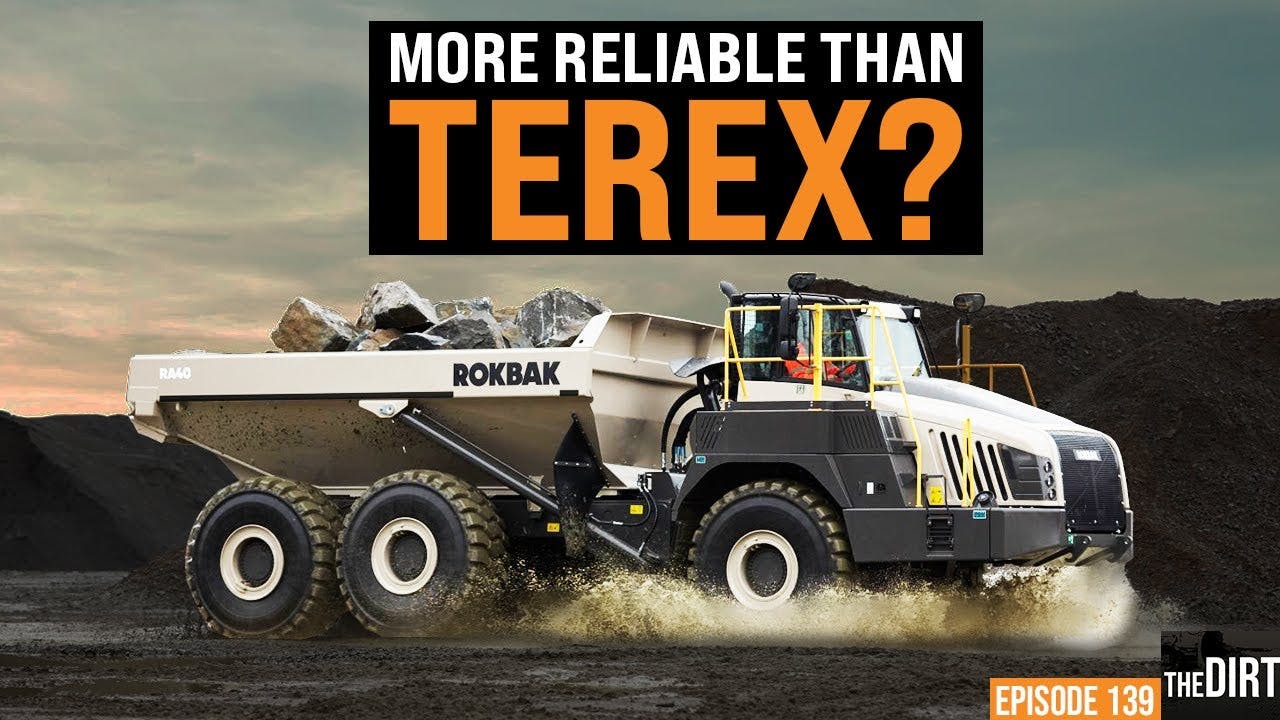

Volvo Construction Equipment bought Terex’s off-road truck line in 2014, and six years later, it rebranded its articulated haulers under the Rokbak name.
On this episode of The Dirt, we hear from Paul Douglas, Volvo vice president of rigid haulers, who explains the differences between the old Terex line and the Rokbak trucks. He also gives a hint at some of the new things coming from Rokbak, including redesigned cabs and replacing the current trucks with new models. There’s also the possibility of a new size truck to hit the market.
Rokbak, as with other construction equipment brands, is working toward a zero-emissions future. On this episode, he explains where the articulated dump truck market is heading in terms of alternative fuel. He adds that customers will see big changes in emissions and engines in the next five years, with the ultimate goal of reaching zero emissions within 10 years.
So to learn more about Rokbak and what the brand has in store for the future, check out this episode of The Dirt.
Equipment World serves up weekly videos on the latest in construction equipment, work trucks and pickup trucks – everything contractors need to get their work done. Subscribe and visit us at equipmentworld.com!
In This Episode:
Trending
-
Jobs2 years ago
Project Manager – Oxford
-
Jobs3 years ago
Commissioning Engineer Security Industry
-
Jobs2 years ago
Airport Retail Sales Assistants
-

 Business5 years ago
Business5 years agoHow To Renovate a Victorian House
-
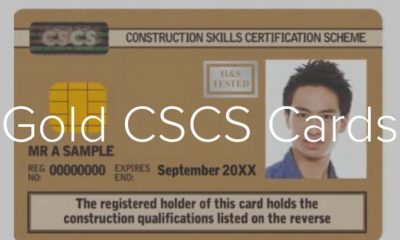
 Business3 years ago
Business3 years agoHow to Get a Gold Supervisory CSCS Card
-
Jobs2 years ago
PASMA labourer in Cirencester
-

 Tech3 years ago
Tech3 years agoIt Won’t Make You the $6 Million Man, But Hilti’s EXO-10 May Save Your Arms, Back
-
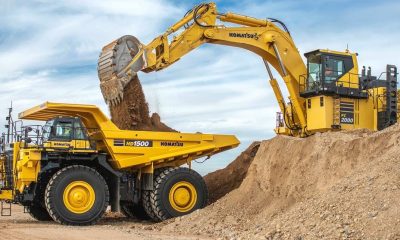
 Tech2 years ago
Tech2 years agoKomatsu launches new HD1500-8E0 rigid-frame dump truck


